不知道有多少人去了解過語言的發展史,早期C語言的語法功能其實比較簡單。隨著應用需求和場景的變化,C語言的語法功能在不斷升級變化。
雖然我們的教材有這么一個結論:C語言是面向過程的語言,C++是面向對象的編程語言,但面向對象的概念是在C語言階段就有了,而且應用到了很多地方,比如某些操作系統內核、通信協議等。
面向對象編程,也就是大家說的OOP(Object Oriented Programming)并不是一種特定的語言或者工具,它只是一種設計方法、設計思想,它表現出來的三個最基本的特性就是封裝、繼承與多態。
1、為什么用C實現OOP? ?
閱讀文本之前肯定有讀者會問這樣的問題:我們有C++面向對象的語言,為什么還要用C語言實現面向對象呢?
C語言這種非面向對象的語言,同樣也可以使用面向對象的思路來編寫程序的。只是用面向對象的C++語言來實現面向對象編程會更簡單一些,但是C語言的高效性是其他面向對象編程語言無法比擬的。
當然使用C語言來實現面向對象的開發相對不容易理解,這就是為什么大多數人學過C語言卻看不懂Linux內核源碼。
所以這個問題其實很好理解,只要有一定C語言編程經驗的讀者都應該能明白:面向過程的C語言和面向對象的C++語言相比,代碼運行效率、代碼量都有很大差異。在性能不是很好、資源不是很多的MCU中使用C語言面向對象編程就顯得尤為重要。
2、所具備的條件? ?
要想使用C語言實現面向對象,首先需要具備一些基礎知識。比如:(C語言中的)結構體、函數、指針,以及函數指針等,(C++中的)基類、派生、多態、繼承等。
首先,不僅僅是了解這些基礎知識,而是有一定的編程經驗,因為上面說了“面向對象是一種設計方法、設計思想”,如果只是停留在字面意思的理解,沒有這種設計思想肯定不行。
因此,不建議初學者使用C語言實現面向對象,特別是在真正項目中。建議把基本功練好,再使用。
利用C語言實現面向對象的方法很多,下面就來描述最基本的封裝、繼承和多態。
3、封裝??
封裝就是把數據和函數打包到一個類里面,其實大部分C語言編程者都已近接觸過了。
C 標準庫中的 fopen(), fclose(), fread(), fwrite()等函數的操作對象就是 FILE。數據內容就是 FILE,數據的讀寫操作就是 fread()、fwrite(),fopen() 類比于構造函數,fclose() 就是析構函數。
這個看起來似乎很好理解,那下面我們實現一下基本的封裝特性。
#ifndef?SHAPE_H #define?SHAPE_H #include?//?Shape?的屬性 typedef?struct?{ ????int16_t?x;? ????int16_t?y;? }?Shape; //?Shape?的操作函數,接口函數 void?Shape_ctor(Shape?*?const?me,?int16_t?x,?int16_t?y); void?Shape_moveBy(Shape?*?const?me,?int16_t?dx,?int16_t?dy); int16_t?Shape_getX(Shape?const?*?const?me); int16_t?Shape_getY(Shape?const?*?const?me); #endif?/*?SHAPE_H?*/
這是 Shape 類的聲明,非常簡單,很好理解。一般會把聲明放到頭文件里面 “Shape.h”。來看下 Shape 類相關的定義,當然是在 “Shape.c” 里面。
#include?"shape.h"
//?構造函數
void?Shape_ctor(Shape?*?const?me,?int16_t?x,?int16_t?y)
{
????me->x?=?x;
????me->y?=?y;
}
void?Shape_moveBy(Shape?*?const?me,?int16_t?dx,?int16_t?dy)?
{
????me->x?+=?dx;
????me->y?+=?dy;
}
//?獲取屬性值函數
int16_t?Shape_getX(Shape?const?*?const?me)?
{
????return?me->x;
}
int16_t?Shape_getY(Shape?const?*?const?me)?
{
????return?me->y;
}
? 再看下 main.c
#include?"shape.h"??/*?Shape?class?interface?*/ #include??編譯之后,看看執行結果:??/*?for?printf()?*/ int?main()? { ????Shape?s1,?s2;?/*?multiple?instances?of?Shape?*/ ????Shape_ctor(&s1,?0,?1); ????Shape_ctor(&s2,?-1,?2); ????printf("Shape?s1(x=%d,y=%d) ",?Shape_getX(&s1),?Shape_getY(&s1)); ????printf("Shape?s2(x=%d,y=%d) ",?Shape_getX(&s2),?Shape_getY(&s2)); ????Shape_moveBy(&s1,?2,?-4); ????Shape_moveBy(&s2,?1,?-2); ????printf("Shape?s1(x=%d,y=%d) ",?Shape_getX(&s1),?Shape_getY(&s1)); ????printf("Shape?s2(x=%d,y=%d) ",?Shape_getX(&s2),?Shape_getY(&s2)); ????return?0; }
Shape?s1(x=0,y=1) Shape?s2(x=-1,y=2) Shape?s1(x=2,y=-3) Shape?s2(x=0,y=0)
整個例子,非常簡單,非常好理解。以后寫代碼時候,要多去想想標準庫的文件IO操作,這樣也有意識的去培養面向對象編程的思維。
4、繼承??
繼承就是基于現有的一個類去定義一個新類,這樣有助于重用代碼,更好的組織代碼。在 C 語言里面,去實現單繼承也非常簡單,只要把基類放到繼承類的第一個數據成員的位置就行了。 ? 例如,我們現在要創建一個 Rectangle 類,我們只要繼承 Shape 類已經存在的屬性和操作,再添加不同于 Shape 的屬性和操作到 Rectangle 中。 ? 下面是 Rectangle 的聲明與定義:
#ifndef?RECT_H
#define?RECT_H
#include?"shape.h"?//?基類接口
//?矩形的屬性
typedef?struct?{
????Shape?super;?//?繼承?Shape
????//?自己的屬性
????uint16_t?width;
????uint16_t?height;
}?Rectangle;
//?構造函數
void?Rectangle_ctor(Rectangle?*?const?me,?int16_t?x,?int16_t?y,
????????????????????uint16_t?width,?uint16_t?height);
#endif?/*?RECT_H?*/
#include?"rect.h"
//?構造函數
void?Rectangle_ctor(Rectangle?*?const?me,?int16_t?x,?int16_t?y,
????????????????????uint16_t?width,?uint16_t?height)
{
????/*?first?call?superclass’?ctor?*/
????Shape_ctor(&me->super,?x,?y);
????/*?next,?you?initialize?the?attributes?added?by?this?subclass...?*/
????me->width?=?width;
????me->height?=?height;
}
我們來看一下 Rectangle 的繼承關系和內存布局:
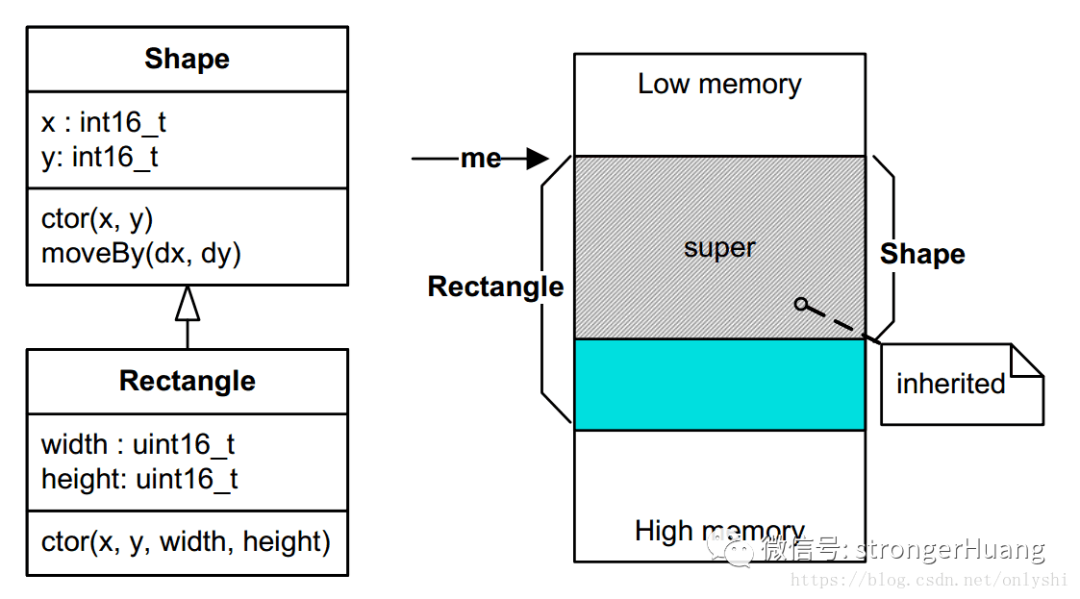
因為有這樣的內存布局,所以你可以很安全的傳一個指向 Rectangle 對象的指針到一個期望傳入 Shape 對象的指針的函數中,就是一個函數的參數是 “Shape *”,你可以傳入 “Rectangle *”,并且這是非常安全的。這樣的話,基類的所有屬性和方法都可以被繼承類繼承!
#include?"rect.h"?? #include?輸出結果:? int?main()? { ????Rectangle?r1,?r2; ????//?實例化對象 ????Rectangle_ctor(&r1,?0,?2,?10,?15); ????Rectangle_ctor(&r2,?-1,?3,?5,?8); ????printf("Rect?r1(x=%d,y=%d,width=%d,height=%d) ", ???????????Shape_getX(&r1.super),?Shape_getY(&r1.super), ???????????r1.width,?r1.height); ????printf("Rect?r2(x=%d,y=%d,width=%d,height=%d) ", ???????????Shape_getX(&r2.super),?Shape_getY(&r2.super), ???????????r2.width,?r2.height); ????//?注意,這里有兩種方式,一是強轉類型,二是直接使用成員地址 ????Shape_moveBy((Shape?*)&r1,?-2,?3); ????Shape_moveBy(&r2.super,?2,?-1); ????printf("Rect?r1(x=%d,y=%d,width=%d,height=%d) ", ???????????Shape_getX(&r1.super),?Shape_getY(&r1.super), ???????????r1.width,?r1.height); ????printf("Rect?r2(x=%d,y=%d,width=%d,height=%d) ", ???????????Shape_getX(&r2.super),?Shape_getY(&r2.super), ???????????r2.width,?r2.height); ????return?0; }
Rect?r1(x=0,y=2,width=10,height=15) Rect?r2(x=-1,y=3,width=5,height=8) Rect?r1(x=-2,y=5,width=10,height=15) Rect?r2(x=1,y=2,width=5,height=8)
5、多態? ?
C++ 語言實現多態就是使用虛函數。在 C 語言里面,也可以實現多態。 ? 現在,我們又要增加一個圓形,并且在 Shape 要擴展功能,我們要增加 area() 和 draw() 函數。但是 Shape 相當于抽象類,不知道怎么去計算自己的面積,更不知道怎么去畫出來自己。而且,矩形和圓形的面積計算方式和幾何圖像也是不一樣的。 ? 下面讓我們重新聲明一下 Shape 類:
#ifndef?SHAPE_H #define?SHAPE_H #include?struct?ShapeVtbl; //?Shape?的屬性 typedef?struct?{ ????struct?ShapeVtbl?const?*vptr; ????int16_t?x;? ????int16_t?y;? }?Shape; //?Shape?的虛表 struct?ShapeVtbl?{ ????uint32_t?(*area)(Shape?const?*?const?me); ????void?(*draw)(Shape?const?*?const?me); }; //?Shape?的操作函數,接口函數 void?Shape_ctor(Shape?*?const?me,?int16_t?x,?int16_t?y); void?Shape_moveBy(Shape?*?const?me,?int16_t?dx,?int16_t?dy); int16_t?Shape_getX(Shape?const?*?const?me); int16_t?Shape_getY(Shape?const?*?const?me); static?inline?uint32_t?Shape_area(Shape?const?*?const?me)? { ????return?(*me->vptr->area)(me); } static?inline?void?Shape_draw(Shape?const?*?const?me) { ????(*me->vptr->draw)(me); } Shape?const?*largestShape(Shape?const?*shapes[],?uint32_t?nShapes); void?drawAllShapes(Shape?const?*shapes[],?uint32_t?nShapes); #endif?/*?SHAPE_H?*/
看下加上虛函數之后的類關系圖:
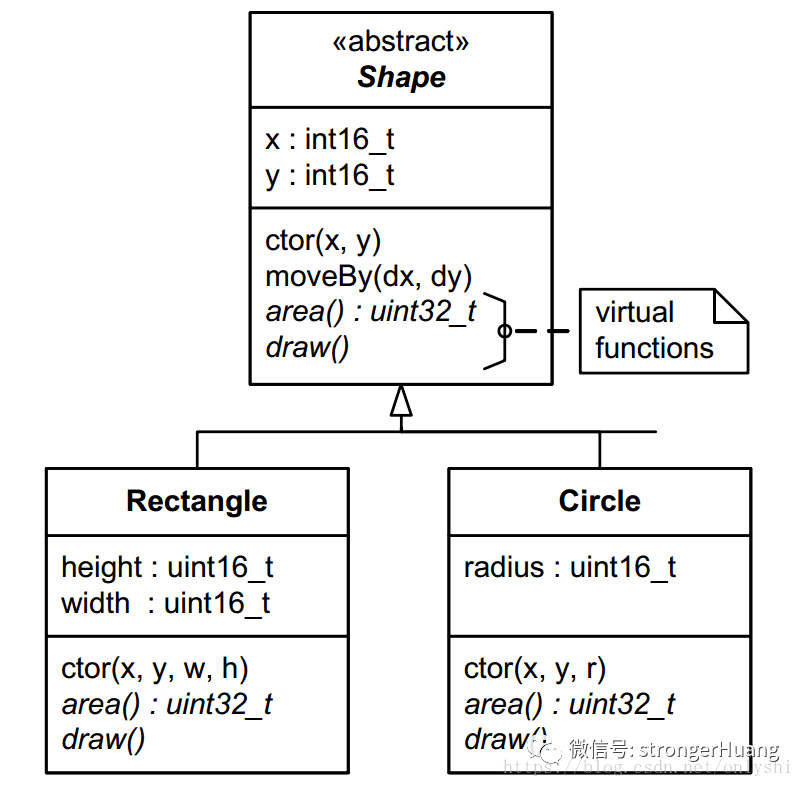
5.1 虛表和虛指針
虛表(Virtual Table)是這個類所有虛函數的函數指針的集合。
虛指針(Virtual Pointer)是一個指向虛表的指針。這個虛指針必須存在于每個對象實例中,會被所有子類繼承。
在《Inside The C++ Object Model》的第一章內容中,有這些介紹。
5.2 在構造函數中設置vptr
在每一個對象實例中,vptr 必須被初始化指向其 vtbl。最好的初始化位置就是在類的構造函數中。事實上,在構造函數中,C++ 編譯器隱式的創建了一個初始化的vptr。在 C 語言里面, 我們必須顯示的初始化vptr。
下面就展示一下,在 Shape 的構造函數里面,如何去初始化這個 vptr。
#include?"shape.h" #include?//?Shape?的虛函數 static?uint32_t?Shape_area_(Shape?const?*?const?me); static?void?Shape_draw_(Shape?const?*?const?me); //?構造函數 void?Shape_ctor(Shape?*?const?me,?int16_t?x,?int16_t?y)? { ????//?Shape?類的虛表 ????static?struct?ShapeVtbl?const?vtbl?=? ????{? ???????&Shape_area_, ???????&Shape_draw_ ????}; ????me->vptr?=?&vtbl;? ????me->x?=?x; ????me->y?=?y; } void?Shape_moveBy(Shape?*?const?me,?int16_t?dx,?int16_t?dy) { ????me->x?+=?dx; ????me->y?+=?dy; } int16_t?Shape_getX(Shape?const?*?const?me)? { ????return?me->x; } int16_t?Shape_getY(Shape?const?*?const?me)? { ????return?me->y; } //?Shape?類的虛函數實現 static?uint32_t?Shape_area_(Shape?const?*?const?me)? { ????assert(0);?//?類似純虛函數 ????return?0U;?//?避免警告 } static?void?Shape_draw_(Shape?const?*?const?me)? { ????assert(0);?//?純虛函數不能被調用 } Shape?const?*largestShape(Shape?const?*shapes[],?uint32_t?nShapes)? { ????Shape?const?*s?=?(Shape?*)0; ????uint32_t?max?=?0U; ????uint32_t?i; ????for?(i?=?0U;?i??max)? ????????{ ????????????max?=?area; ????????????s?=?shapes[i]; ????????} ????} ????return?s; } void?drawAllShapes(Shape?const?*shapes[],?uint32_t?nShapes)? { ????uint32_t?i; ????for?(i?=?0U;?i? ?5.3 繼承 vtbl 和 重載 vptr 上面已經提到過,基類包含 vptr,子類會自動繼承。但是,vptr 需要被子類的虛表重新賦值。并且,這也必須發生在子類的構造函數中。下面是 Rectangle 的構造函數。
#include?"rect.h"?? #include?? //?Rectangle?虛函數 static?uint32_t?Rectangle_area_(Shape?const?*?const?me); static?void?Rectangle_draw_(Shape?const?*?const?me); //?構造函數 void?Rectangle_ctor(Rectangle?*?const?me,?int16_t?x,?int16_t?y, ????????????????????uint16_t?width,?uint16_t?height) { ????static?struct?ShapeVtbl?const?vtbl?=? ????{ ????????&Rectangle_area_, ????????&Rectangle_draw_ ????}; ????Shape_ctor(&me->super,?x,?y);?//?調用基類的構造函數 ????me->super.vptr?=?&vtbl;???????????//?重載?vptr ????me->width?=?width; ????me->height?=?height; } //?Rectangle's?虛函數實現 static?uint32_t?Rectangle_area_(Shape?const?*?const?me)? { ????Rectangle?const?*?const?me_?=?(Rectangle?const?*)me;?//顯示的轉換 ????return?(uint32_t)me_->width?*?(uint32_t)me_->height; } static?void?Rectangle_draw_(Shape?const?*?const?me)? { ????Rectangle?const?*?const?me_?=?(Rectangle?const?*)me;?//顯示的轉換 ????printf("Rectangle_draw_(x=%d,y=%d,width=%d,height=%d) ", ???????????Shape_getX(me),?Shape_getY(me),?me_->width,?me_->height); } 5.4 虛函數調用
有了前面虛表(Virtual Tables)和虛指針(Virtual Pointers)的基礎實現,虛擬調用(后期綁定)就可以用下面代碼實現了。
uint32_t?Shape_area(Shape?const?*?const?me) { ????return?(*me->vptr->area)(me); }這個函數可以放到.c文件里面,但是會帶來一個缺點就是每個虛擬調用都有額外的調用開銷。為了避免這個缺點,如果編譯器支持內聯函數(C99)。我們可以把定義放到頭文件里面,類似下面:
static?inline?uint32_t?Shape_area(Shape?const?*?const?me)? { ????return?(*me->vptr->area)(me); }如果是老一點的編譯器(C89),我們可以用宏函數來實現,類似下面這樣:
#define?Shape_area(me_)?((*(me_)->vptr->area)((me_)))?看一下例子中的調用機制:
? 5.5 main.c
#include?"rect.h"?? #include?"circle.h"? #include?? int?main()? { ????Rectangle?r1,?r2;? ????Circle????c1,?c2;? ????Shape?const?*shapes[]?=? ????{? ????????&c1.super, ????????&r2.super, ????????&c2.super, ????????&r1.super ????}; ????Shape?const?*s; ????//?實例化矩形對象 ????Rectangle_ctor(&r1,?0,?2,?10,?15); ????Rectangle_ctor(&r2,?-1,?3,?5,?8); ????//?實例化圓形對象 ????Circle_ctor(&c1,?1,?-2,?12); ????Circle_ctor(&c2,?1,?-3,?6); ????s?=?largestShape(shapes,?sizeof(shapes)/sizeof(shapes[0])); ????printf("largetsShape?s(x=%d,y=%d) ",?Shape_getX(s),?Shape_getY(s)); ????drawAllShapes(shapes,?sizeof(shapes)/sizeof(shapes[0])); ????return?0; } 輸出結果:
largetsShape?s(x=1,y=-2) Circle_draw_(x=1,y=-2,rad=12) Rectangle_draw_(x=-1,y=3,width=5,height=8) Circle_draw_(x=1,y=-3,rad=6) Rectangle_draw_(x=0,y=2,width=10,height=15)6、總結? ?
還是那句話,面向對象編程是一種方法,并不局限于某一種編程語言。用 C 語言實現封裝、單繼承,理解和實現起來比較簡單,多態反而會稍微復雜一點,如果打算廣泛的使用多態,還是推薦轉到 C++ 語言上,畢竟這層復雜性被這個語言給封裝了,你只需要簡單的使用就行了。但并不代表,C 語言實現不了多態這個特性。 ?
編輯:黃飛
?
 電子發燒友App
電子發燒友App






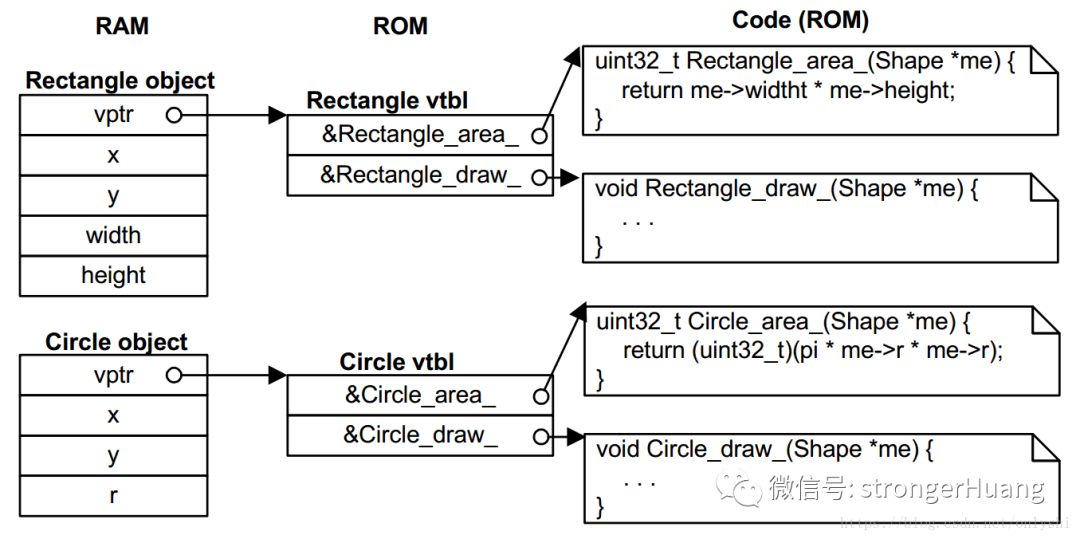





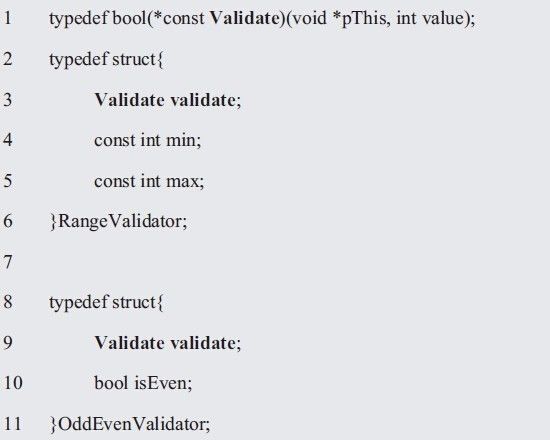
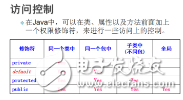

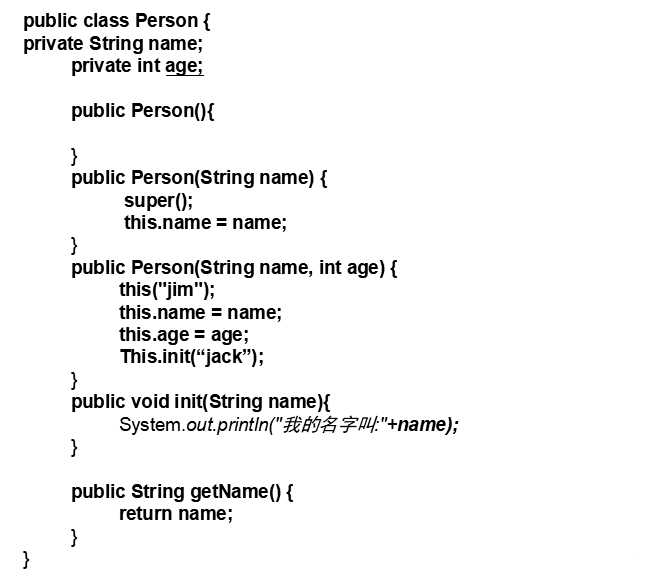

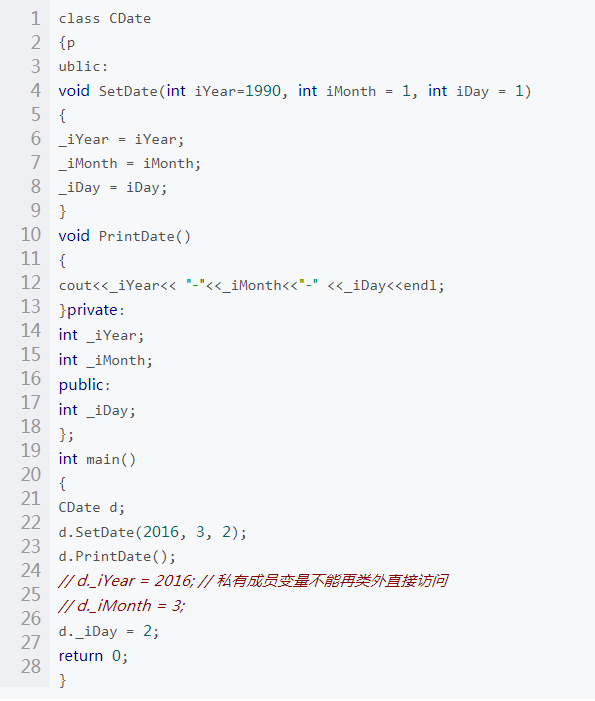












評論